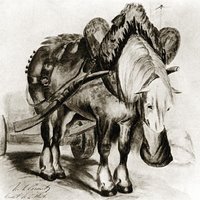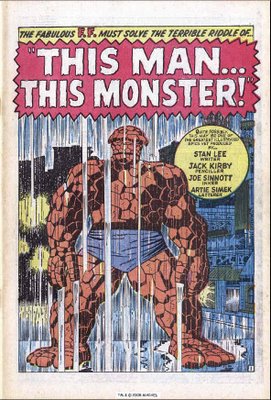2007 UF Conference on Comics - "World Building: Seriality and History"
 Yesterday I received the call for papers for The University of Florida's 2007 Conference on Comics, so I thought I'd post it here. This will be the fifth comics conference hosted at UF; you can find information on previous years here. I had the pleasure of attending 2003's "Underground(s)" conference, so I know that attendees will learn quite a lot from both the scholars and the cartoonist-guests.
Yesterday I received the call for papers for The University of Florida's 2007 Conference on Comics, so I thought I'd post it here. This will be the fifth comics conference hosted at UF; you can find information on previous years here. I had the pleasure of attending 2003's "Underground(s)" conference, so I know that attendees will learn quite a lot from both the scholars and the cartoonist-guests.Here's the Call for Papers:
The University of Florida's College of Liberal Arts and Sciences and the Department of English are pleased to announce the 2007 UF Conference on Comics: "World Building: Seriality and History," which will be held in Gainesville, Florida, on March 3-4, 2007, in conjunction with the annual Game and Digital Media Studies Conference, which will be March 1-2.For a list of possible topics, please see the on-line call for papers. Actually, I've been kicking around some thoughts on this very topic lately; hmmmm. Maybe I'll see you there!
This fifth annual conference on comics will focus on the construction of narrative worlds in comics, with particular emphasis on the various temporalities of the medium. We are especially interested in the ways temporality informs the status of comics as a serial medium (both in terms of serial publication as well as the serialization of time within the page) and the ways temporality relates to the representation of history and memory within the narrative. This could be in terms of personal and social history, as in Maus and Persepolis, or in terms of internal narrative histories like superhero retcons and crossovers.
Our keynote speakers for this year include Jeff Smith (Bone), Bryan Talbot (The Tale of One Bad Rat, The Adventures of Luther Arkwright), Dylan Horrocks (Hicksville), and Gail Simone (Birds of Prey, Action Comics).
We also encourage submissions that cross over with the Game and Digital Media Studies conference, on the topic of "World Building: Space and Community," particularly those that consider the role of time and space across multiple media. We will also consider two-part submissions on related topics to be presented across the two conferences, and other proposals that push the formal constraints of a conference presentation.
Abstract submissions should be approximately 250-500 words in length. Presentations will be 15 minutes with 5 minutes of question and answer.
The deadline for abstract submissions is January 1st, 2007. Abstracts should be submitted via our online conference system, which is on the conference website at http://www.english.ufl.edu/worlds . Please direct all questions to sandifer@english.ufl.edu.
Image credit: World Building website.
Labels: academic, conferences, UF












